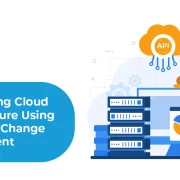
The Ultimate Guide to Building a Secure Flutter App
Summary
Learn how to build secure Flutter apps with this comprehensive guide. This article offers best practices for ensuring the security of apps developed with the Flutter framework.
Two significant factors have shaped the modern digital environment: internet connectivity and mobile apps. Today, over 58% of global web traffic stems from mobile applications. Given the increasing popularity of smartphones, there has also been an exponential demand for apps. As per market data, the total number of mobile app downloads in 2023 was a whopping 257 billion.
When it comes to building mobile apps, cross-platform development has become a preferred choice for many organizations and app developers. The market for cross-platform app development is predicted to reach $546.7 billion by 2023, expanding at 16.8% CAGR. A compelling reason for the increasing usage of cross-platform development is that it provides a more efficient and economical approach to app development.
It’s crucial to note that apps built to be compatible with different platforms are only as robust as their environment. This is where Flutter app development comes into the picture. Flutter is one of the most dependable and sturdiest frameworks for cross-platform development.
This tutorial provides insights into how to develop a secure Flutter app in simple steps.
Let’s get started.
Table of Contents:
- What is Flutter App Development?
- Why Follow the Flutter App Development Roadmap?
- Step-By-Step Flutter App Development Tutorial
- Tips and Strategies to Ensure Secure Flutter App Development
- Conclusion
What is Flutter App Development?
Flutter is an open-source technology for developing cross-platform applications. Created by Google, it is a complete software development kit (SDK). It allows you to build high-quality mobile applications for Android, iOS, and the web using one codebase.
Ensuring high performance, ease of use, and flexibility in building apps, Flutter offers all that you need for app development in a single package. By opting for Flutter app development, you can create attractive and efficient apps while saving on cost and time.
Why Follow the Flutter App Development Roadmap?
Flutter mobile app development serves as the key to streamlining app development. Here are some of the major reasons to implement this technology for building apps:
1. Cost-Effectiveness
Flutter makes use of a single codebase for cross-platform app development. As a developer, you can reuse about 90% of the code for developing apps to cater to multiple devices, browsers, and operating systems.
By reusing code, you can cut down on app development costs and resources. Also, it’s easier to maintain Flutter apps, which helps you to reduce maintenance costs after deployment and optimize ROI.
2. Reusability
You can write one codebase and implement it for all types of app development, including iOS, Android, desktop, web, and more. This feature significantly speeds up the app development process.
Hot reload is another feature that enables you to make changes and update your app in real-time. With this feature, you can even fix bugs on the go, thus reducing development time.
3. High Performance
As far as cross-platform technologies are concerned, Flutter apps make a strong case for high performance. For instance, if you consider Flutter vs. React Native, Flutter edges out the latter in terms of performance.
Being a mobile SDK, Flutter doesn’t depend on an interconnecting bridge between the platform and the app for communication. Due to this, you can have faster-starting Flutter mobile apps featuring seamless animations and very less performance issues.
4. Consistent User Experience
The Flutter language is Dart, and it supports AOT (ahead-of-time) compiled code. This helps Flutter apps start up and run faster and enhance their security.
Further, Flutter’s custom widgets allow you to create stunning visuals. The Skia Graphics Library used by Flutter redraws the UI each time there’s a change of view. All these combine to ensure a smooth and consistent app experience for the user.
Also Read: Top 7 Reasons Why You Should Choose Flutter for Mobile App Development
How to Build a Flutter App?
To develop a Flutter app, you must follow a multi-step process. The steps mentioned below in this Flutter app development tutorial will guide you in this endeavor.
Step 1: Identify and Define Your App Goals
The first step of your Flutter app development process is to identify why you are building the app. By establishing your goals, you will be able to outline the roadmap for your mobile app development. It will also help you to make informed decisions when defining the structure and architecture of your app.
Further, having a clear idea about your development goals will enable you to figure out your target audience.
Step 2: Carry Out Market Research
With millions of apps existing in the market, you need to lend your Flutter app a competitive edge to help it stand out among its contemporaries. This is where conducting extensive market research can come in handy.
Your research will give you an idea of what features the other apps offer and in which areas they lack. You will also be able to identify any gap between supply and demand and work towards offering a solution through your app.
Step 3: Finalize Core Functionalities and Features
This is the stage where you need to finalize the core functionalities and features of your Flutter app before you start building it. Ensure that the value-added features of your app are completely in sync with the primary use cases.
When adding features to your app, always prioritize value before volume. In other words, avoid adding any feature that you may not need to deliver the core functionalities of your app.
Step 4: Focus on Accessibility and Usability
As a powerful cross-platform SDK, Flutter makes it easier to develop a wide variety of functionalities. However, you also need to focus on aesthetics and ease of use.
While aesthetics are essential to entice users, having an easy-to-use interface can enhance user experience. By leveraging Flutter’s rich collection of ready-to-use libraries and widgets, you can ensure a flawless user experience.
Step 5: Test Your App for Inconsistencies and Errors
One of the key advantages of Flutter is that it allows you to write testable code. This practice helps you to maintain a sustainable codebase.
By testing your app under varied conditions, you can failure-proof it for all scenarios and elevate its trustworthiness. Make sure to write multiple tests for every feature of your app before you proceed to the production stage. This will enhance its consistency.
Step 6: Get On with App Deployment and Distribution
After building all functionalities and fixing bugs and inconsistencies, you can deploy and distribute your app. This is when you need to develop your distribution strategy and concentrate on app store approvals.
Make sure to have a post-deployment plan to monitor your app’s usage and performance as well.
Tips and Strategies to Ensure Secure Flutter App Development
When it comes to Flutter app development, embracing security practices is essential for several reasons. These include protecting user data, preventing financial loss, upholding user trust, etc.
Here are some tips to address security concerns while developing Flutter apps:
- Always write code carefully and follow Flutter’s best practices while coding.
- Ensure that all third-party libraries are of the latest versions.
- Practice implementing security design patterns in Flutter apps, such as authentication and authorization protocols.
- Follow the principles of data encryption to protect sensitive data and render them unreadable by unauthorized entities.
Also Read: Five Essential Tools for Flutter Mobile App Development in 2024!
To Wrap
Building cross-platform applications is no longer a challenge. By opting for Flutter app development, you can build highly functional apps that meet your needs. Further, by following security practices, you can ensure that your app offers a secure user experience.
If you are looking for a platform that offers efficient Flutter application development solutions, you can team up with Hurix Digital. This platform blends innovation with cutting-edge technology to develop seamless mobile and web apps that resonate with the latest market demands.
Want to know more? Contact us today!

Currently serving as the Vice President of Technology Delivery Operations at HurixDigital, a prominent global provider of digital content and technology solutions for publishers, corporations, and educational institutions. With over 16 years of experience spanning EdTech and various domains, I hold certification as a SCRUM Product Owner (CSPO). My expertise includes operations, finance, and adept people management skills.




